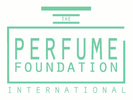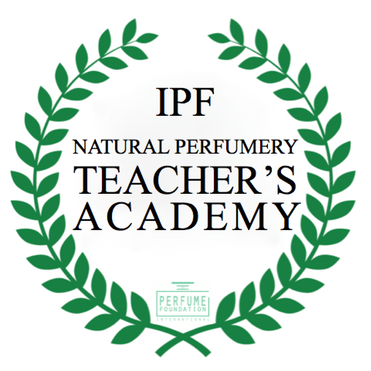|
by Pr Françoise RAPP, IPF Chair France and French Natural Perfumery and Natural Aromatherapy Expert Perfume has always had a sacred meaning connecting man with the divine, but did you know that it had other more "therapeutic" roles such as protecting or even preserving the good health of the body? The oldest knew it and they used essences, resins in various forms for this action. Fumigations, anointing, and also accessories for carrying perfume were used as early as ancient Egypt. This way of proceeding was then taken up again during ancient Rome and then came to Europe through the Crusades. This accessory diffused the scent of aromatics, animal raw materials and various resins thanks to the body heat. It is said then that he helped protect himself from the Black Death and other miasmas of the time. Far from being a tool or means of seduction, this perfume had above all a medicinal function above all. It was most often of an almost solid pasty texture. Its powerful and purifying fragrance emanated from an accessory called sweet apple. This object has evolved greatly over the course of history to be worn like a jewel on the belt or around the neck. The Renaissance saw sweet apples as a fashion accessory with multiple functions, including those of covering bad body odor and protecting against epidemics decimating the population. It must be remembered that bodily hygiene was understood as something almost erotic by the Church. The sweet apple was then very practical to use and this accessory was declined like a real jewel even demonstrating a level of richness by the object and by the raw materials used because these were expensive. What is a sweet apple and how does it work? Sweet apples, "pommanders" or "pomanders" are either openwork or made up of airtight "quarters". These objects are almost exclusively precious jewels. Common people and poor people cannot afford these rare and expensive perfumes. Pomanders are usually spherical in shape and open in two parts and then into several quarters, like an orange. In each of these quarters are placed the herbs. In contact with the heat of the body, the aromatics exhaled their perfumes, delicious perfumes offered to God "per fumum". Perhaps this original oblation helped to obtain a divine favor: that of living a long life or curing an illness in addition to emanating powerfully purifying and protective aromatic scents. Medieval sweet apples were continually worn by their owner. As a necklace, a ring or held at the end of a velvet ribbon or a precious metal chain, they accompanied the body and remained as close as possible to it. What raw materials for perfume were then used? These objects allow you to carry the scent of musk, ambergris or civet with you (materials all secreted by wild animals with a ... pronounced smell) The Song of Songs also regularly refers to spices. In its different versions (Greek, Latin or Hebrew), it always ends by evoking "the mountain of spices". The aromatics therefore legitimately find their place in the culture of the Middle Ages. They are the luxurious ingredients warmly recommended by the Church to guard against epidemics and especially the Black Death. In 1174, the ancestor of perfume diffusers arrived in Europe. On this date, Baudoin IV (1161-1185), King of Jerusalem, offered Emperor Frederick Barbarossa (1122 - 1190) several golden apples (precious sweet apples) filled with musk. Chronologically, musk and amber are the most popular scents. Nevertheless, from the middle of the 14th century, the Paris medical faculty added no less than 29 odorous substances suitable for taking place in these cases. Thus make their appearance nutmeg, aloe wood, ginger, cloves, cinnamon, camphor, sandalwood or cinnamon. These herbs come from the Eastern Perfume Roads crossing countries as far as they are fascinating. Recipe for making pomander included in The Treasury of Commodious Conceits, and Hidden Secrets by John Partridge (London, 1586) "Benzoin resin, calamus, labdanum, and storax balm were ground into a powder, dissolved in rose water, and placed in a saucepan over a fire to cook together. The cooked mixture was then removed from the heat, rolled into an apple shape and coated with a powdered mixture of cinnamon, soft sanders and cloves. After that, a concoction was made from three grains each of ambergris, deer musk and civet musk. Ambergris was dissolved first, and deer and civet musk were mixed later. The "apple" ball was rolled through the musk concoction to blend into these ingredients, then kneaded to combine and molded into an apple shape." Nostradamus Recipe Michel de Nostredame had a similar method and formula but a rather different procedure. The "rose tablets" were made by soaking a pound of roses without the flower heads in deer musk water overnight. The water was then carefully wrung out and the roses crushed with seven ounces of benzoin, a quarter of ambergris and another of civet musk. This mixture was made into tablets, which were each sandwiched between rose petals and dried in a cool, dark place. To form the final pomander, two ounces of the purest labdanum, one ounce each of styrax and benzoin resin, half an ounce of rose tablets, one ounce of violet powder, and half a dram each of ambergris and musk were ground into powder and kneaded with rose water from the manufacture of rose tablets. This produced "an aromatic ball of the most sublime and long-lasting scent that could be made anywhere in the world" it seems. If you were to create a pomander today with existing raw materials, what would the formula be?
Become a natural perfumer and discover how to formulate natural fragrances; discover the program and register quickly before November 8th. The French Natural perfumery program opens its doors for 8 exciting weeks! And if you want to learn more about the history of pomanders don’t miss Creezy Courtoy’s World Perfume History MasterClass starting on December 6.
0 Comments
|
Archives
June 2024
Categories
All
|
- HOME
- ABOUT
- IPF CERTIFICATION
-
COURSES
-
MASTER CLASSES
- Teaching Methodology
- Natural Raw Material Extraction Methods >
- Natural Candle Making
- Healing Gardening
- Sustainable Oud MasterClass
- World Perfume History Master Class
- Scent Design and Formula Building >
- Fragrant Botany & Chemistry >
- Perfume Design, Concept and Storytelling
- French Natural Aromachology #1
- French Natural Aromachology #2
- Olfaction Training for Children
- Accords - Chypre
- Accords - White Florals 1
- Accords - Fougeres and Aromatics
- FRAGRANCE DEVELOPMENT
- SPEAKERS
- EXHIBITIONS
- Partners
- Blog
- Contact






 RSS Feed
RSS Feed
